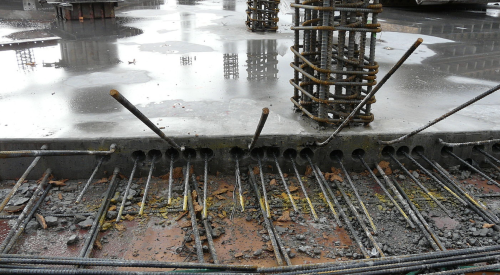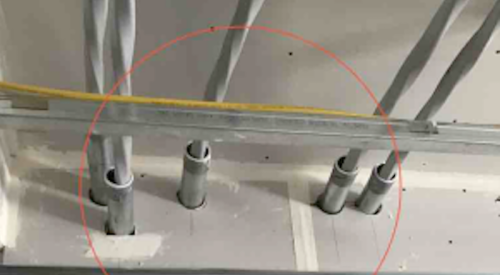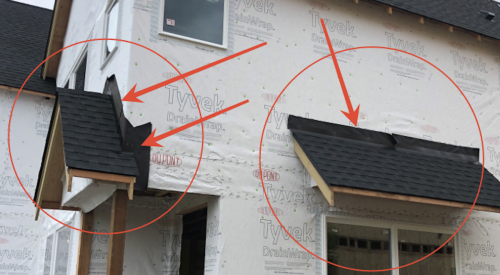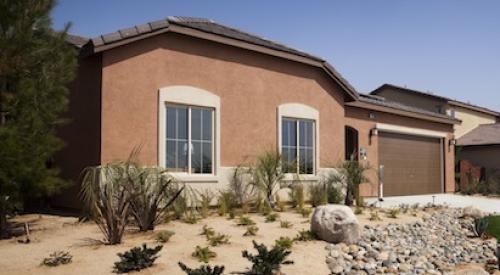 |
In this first article, I want to expose seven major issues eating away at your bottom line every day in every community you build. In fact, I estimate you are throwing away anywhere from $5,000 to possibly even $25,000 per house on wasted costs due to quality inefficiencies in your construction practices.
Focus on Construction Quality to Deliver More to Your Bottom LineA couple of years back, I sat in on an excellent seminar given by Alan Mooney, president of Criterium Engineers, a company that has carried out more than 100,000 home construction quality inspections in the last 20 years. His company has witnessed major, common recurring problems. These are issues that one of my partners, Brad Oberg, co-founder and CTO of IBACOS, an advanced-research and consulting firm, has also seen when working in the field with production builders on building science and performance issues.
Oberg provides his insights on the top seven issues he and Criterium have witnessed in the field. We've also provided the percentage of total homes that Criterium has seen affected to give you a sense of scale.
Issue No. 1: Window and Door Installation — 23%As important as window and door installation is, most builders don't identify it as a specific step with appropriate quality standards, training or inspections. Many leaks identified as window or door leaks actually start at other locations, so responsibility is also hard to assign. The key issues are integrating the window or door into the drainage plane strategy and window units that fail due to poor shipping or handling on-site. Unfortunately, repair requires destruction of a much broader area and can cost more than $500 for a single window. Details are influenced by one of many trades and typically happen to more than one window at a time.
Issue No. 2: Roof Installation — 21%This critical water-managing building system is often incorrectly installed, and the edges of the roof fail most often. The roofing underlayment is an essential element of water management, and water enters the eaves if the felts are short or incorrectly lapped. If the eaves are large, damage is contained to the external structure, but with minimum overhang styles, the water will damage interior finishes. This issue tends to be systemic, and we have worked with builders to repair hundreds of overhangs in many communities that sometimes cost as much as $2,000 per house.
Issue No. 3: Site Selection/Soil Preparation — 19%Most issues are not structural with slabs and foundations but are drainage related. Correcting inadequate slope from the house or poor separation of grade at the perimeter requires intense re-grading and sometimes sub-surface drainage systems. Some of the issues are not big but come about in baseboard warping and localized mold behind trim. Repair is much more involved, with full site re-grading and maybe $5,000 to $15,000 per occurrence.
Issue No. 4: Framing — 18%Nail-pops, cracked wallboard, doors that bind, floors that bounce and roofs that sag may all be traced to a poor understanding of the load path of the house. New framing systems using I-joists and floor trusses require specific blocking plans. Even engineered systems such as roof trusses need to be braced adequately and sheathed with materials of adequate strength. Repairs can become extensive and expensive when they require moving the homeowners and their furnishings into a hotel. Most of these issues could be avoided with a combined training and inspection plan that get the framer and super on the same page early.
Issue No. 5: HVAC/ Mechanical Equipment Installation — 16%The HVAC system is becoming core to home comfort for home buyers and is one of the least understood building science aspects by builder teams in their houses. The irony is that as we build better homes, space conditioning sizing and performance becomes more difficult. Larger fan and system capacity once solved design problems, and balancing could solve most comfort-related issues. Today, poor duct sizes can choke the air distribution system, and the only correction may be to completely replace ductwork in finished homes. Improperly sized equipment doesn't dehumidify adequately and may not provide the correct amount of fan capacity, which can result in inadequate mixing of air within the space and therefore uncomfortable surroundings. The solutions reside in proper design and engineering practices and installation processes. Unfortunately, the repair can run into tens of thousands of dollars per home.
Issue No. 6: Siding Installation — 15%This is another critical water management system. There are probably more ways to install siding incorrectly than there are correct ways. Siding and other exterior finishes are only weather barriers. Brick, stucco, wood, cement and vinyl sidings are really sunscreens for the protection of the underlying drainage plane. No siding acts to hold out 100 percent of wind-driven rain, yet the mere act of installing sidings frequently damages the drainage plane. In addition, while finish materials may transition, the drainage plane behind them must be continuous.
Issue NO. 7: Foundation Construction — 14%One in seven homes has a foundation problem. Improvements in structural integrity such as post-tensioned slabs are not licensed to reduce preparation, placement and finishing practices for concrete, yet that is frequently the case. High water content, poor consolidation and poor curing conditions can build in defects that show over the first several years. Costs of repairs can be in the tens of thousands of dollars.
As the late great-American quality guru W. Edwards Deming advised, "Eighty five percent of any issue lies in the organizational design, and only 15 percent resides with people."
I don't believe anyone gets up every day believing they are going to the job site to incorrectly install a window, yet 23 percent are being installed incorrectly. Let's assume that you build your homes to a similar "average" standard and therefore have similar percentages for each of the quality issues. Write down how many homes you build in total. Then do the math for each of the percentages to work out your estimated cost for each wasteful issue.
In April's article, we'll dig deeper into the financial analysis of the seven issues. I think you'll be shocked at how much money you're letting fall off of the table.
| Author Information |
| Michael Dickens is the CEO of BuildIQ, which provides online training on best practices in home building. |












